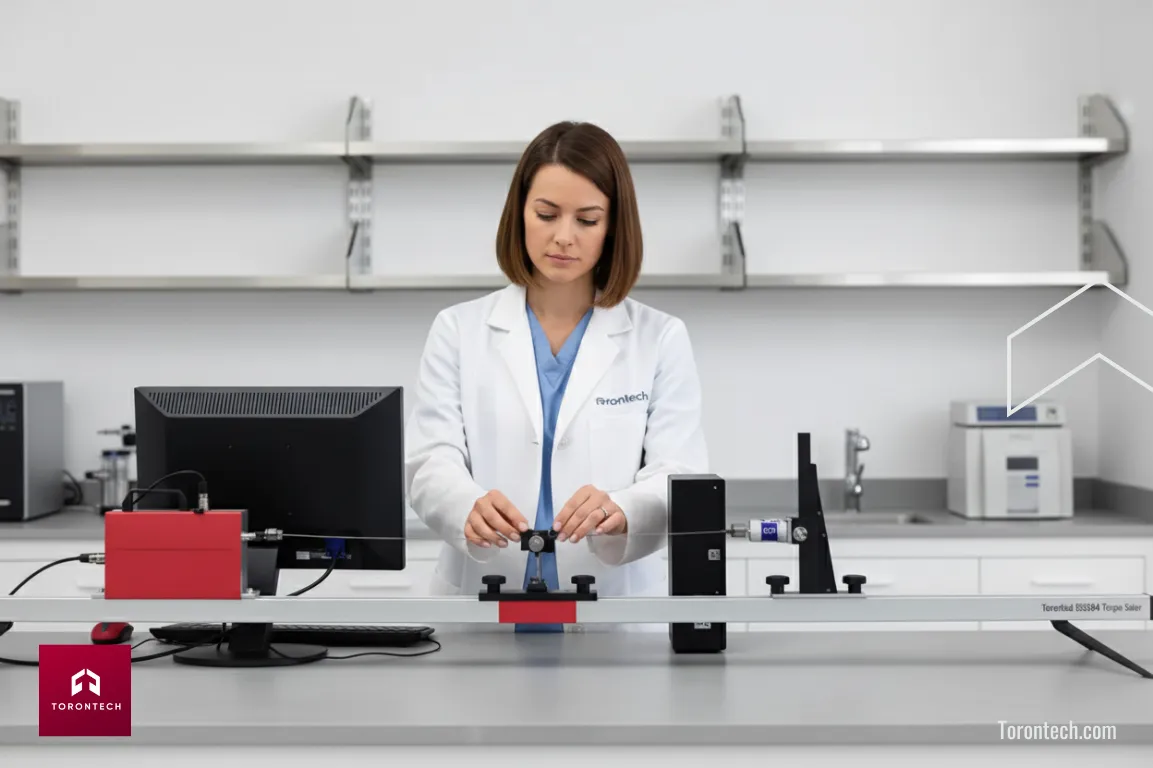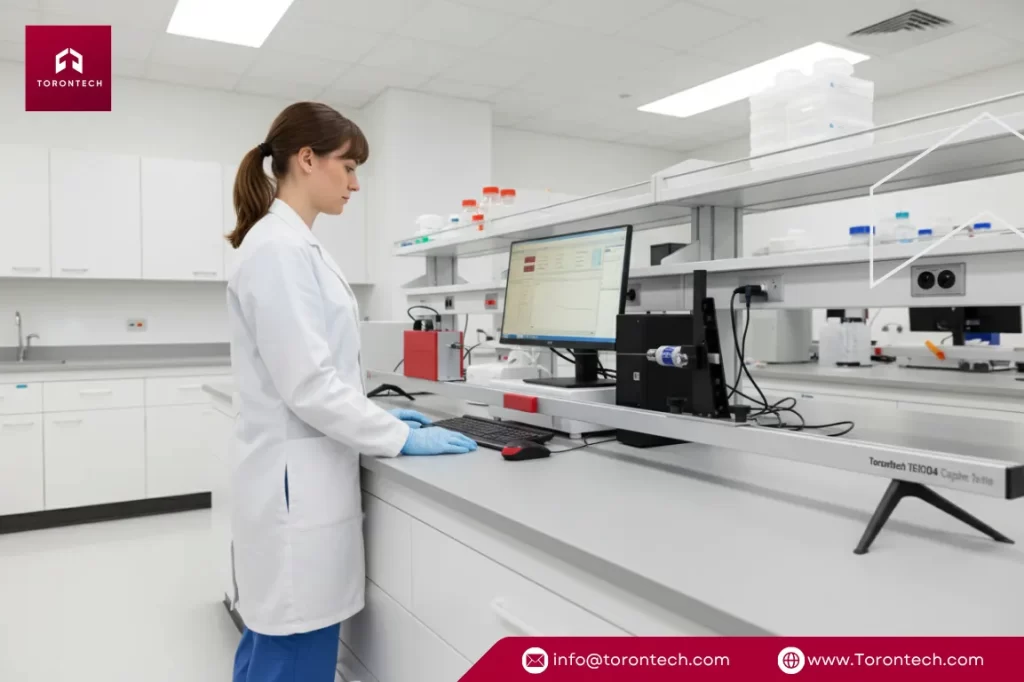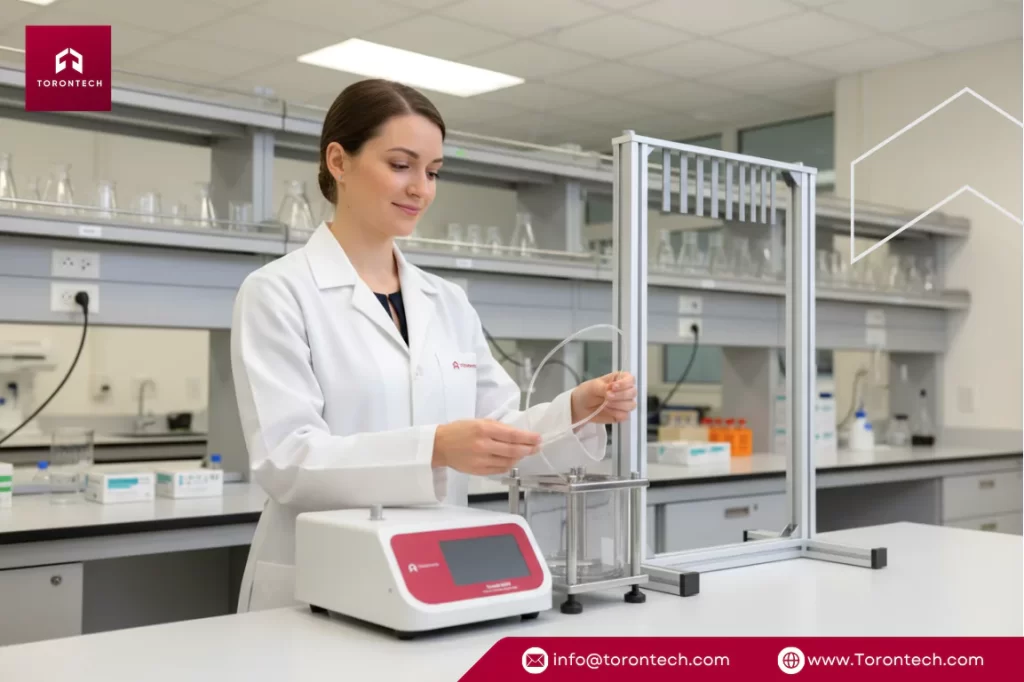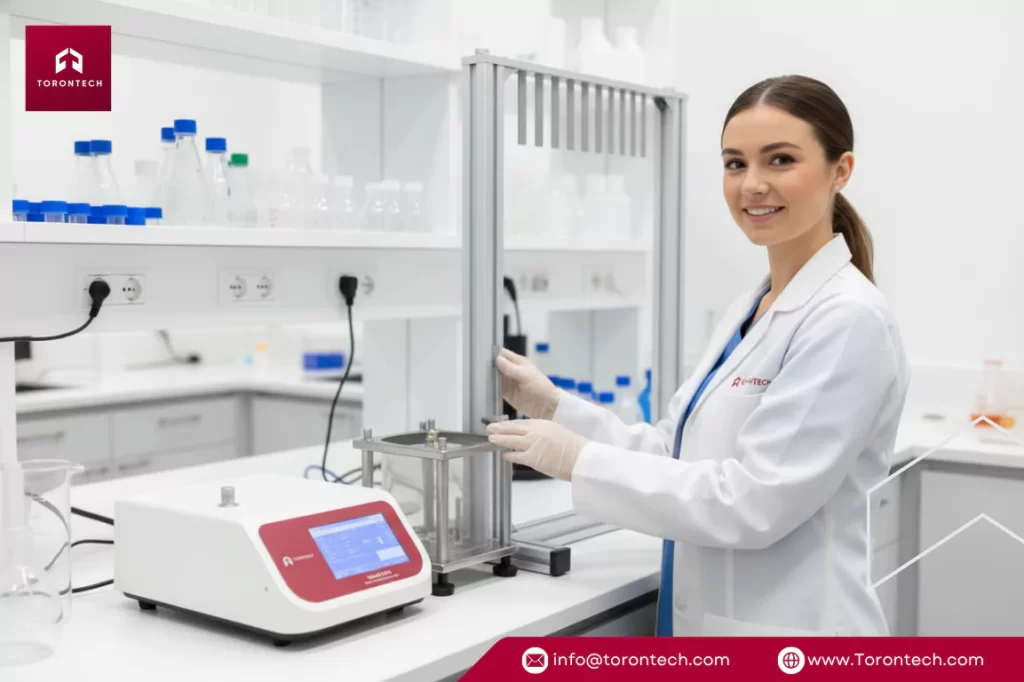In a competitive medical device market, the quality of your data is the quality of your product. Much of the standard lab equipment available can be frustratingly imprecise or difficult to operate.
When it comes to assessing the torque characteristics of your guidewires and catheters, imprecise measurements can obscure critical design flaws. The result is a device that may not perform as expected during a clinical procedure, leading to costly redesigns and delays.
This guide provides our practical perspective on how to choose a torque tester for your guidewire and catheter, ensuring the devices you develop meet the highest performance standards from the start.
Why This Focus on Torque is Clinically Relevant

For a moment, step outside the engineering lab and into the procedure room. A physician performing an intervention depends completely on the tactile feedback from the device in their hands to make critical decisions. The rotational force they apply at the hub must translate predictably and immediately to the device’s distal tip, often over a meter away, deep inside a patient’s vasculature.
When that torque response is inconsistent or unresponsive, the device feels sluggish and unreliable. For example, consider a physician attempting to steer a guidewire through a heavily calcified lesion in a coronary artery. If the device has poor torque response, the tip may not rotate precisely, leading to a ‘whipping’ motion that could damage the vessel wall or prolong the procedure.
This is the exact scenario that rigorous benchtop testing aims to prevent. We have seen how effective torque characterization identifies these potential issues early in development, which is why we view this step as fundamental to creating safer, more effective medical instruments.
Key Factors in How to Choose a Torque Tester

When you’re figuring out how to choose a torque tester for your guidewire, you need an instrument that provides actionable information without creating operational friction. In our view, the following attributes are not just features on a spec sheet; they are foundational requirements for generating data you can stand behind.
Does it Provide Fine-Point Accuracy?
For a device as delicate as a modern guidewire, we believe millinewton-level sensitivity is a baseline requirement. A small deviation in torque at the hub can translate into a large, uncontrolled movement at the tip. Anything less than extreme precision introduces a level of uncertainty that can mask these subtle, yet critical, performance characteristics.
This is the reason we engineered our ToronMed-TTGC04 with a high-resolution 0.01 mN·m sensor—to capture the most granular data and provide an unshakeable foundation of trust in your results.
Does the Software Create Bottlenecks?
A common challenge in product development is how data management can impede progress, especially with regulatory deadlines approaching.
Clunky or non-intuitive software is a significant source of this friction, leading to delays in product iterations and creating risks of human error during manual data transfers. Good software should be an asset, not an obstacle. It should generate the necessary graphs and statistical reports without requiring extensive technical expertise.
The software paired with our ToronMed-TTGC04 is intended to streamline this process, allowing your team to concentrate on device innovation, not data extraction.
Does it Offer Sufficient Testing Versatility?
Measuring only the torque-to-failure point provides an incomplete, and frankly, misleading picture of device performance.
A simple torque-to-failure test might show that a catheter’s braid won’t break, but it won’t reveal how it behaves during rotation. A constant angle test, for instance, could reveal that the device stores and then uncontrollably releases energy—a behavior that would make precise steering impossible.
This is why a versatile tester is a critical factor when you choose a torque tester for your catheter.
Does it Ensure Data Integrity Through Proper Fixturing?
One of the most common and overlooked causes of flawed data is an improper device interface.
If a fixture deforms the device even slightly, or inadvertently applies axial tension, the torque readings will be corrupted from the start. If it fails to secure the device firmly, the measurements are equally unreliable.
We made certain the fixturing system for the ToronMed-TTGC04 is adaptable enough to manage various device sizes and sensitive enough to hold them securely without introducing these disruptive variables.
Does it Conform to Industry Standards?
Alignment with established standards like ASTM F2394 is a core requirement for regulatory acceptance and quality assurance. More than that, it ensures that your data is comparable and consistent.
Following these official methods is a key part of how to choose a torque tester for your guidewire and catheter, as it simplifies your validation process significantly and adds a layer of objective credibility to your findings.
The Right Torque Tester Solution from Torontech
The process of how to choose a torque tester for your guidewire and catheter is a critical decision for your product’s quality, its path to market, and its ultimate clinical success. By prioritizing accuracy, software usability, testing versatility, and standards conformity, you provide your team with an instrument that delivers genuine insight and a true competitive advantage.
At Torontech, we work to address the balance between high performance and practical budgets, making it easier to choose a medical device testing equipment that meets both engineering and financial requirements. Our ToronMed-TTGC04 Torque Tester is our contribution to this challenge, developed to provide a cost-effective system without sacrificing measurement quality.
If you are looking to improve your device testing protocol, contact our engineering team. We can discuss your specific application and determine how our torque testing solutions can support your product development goals.
Ready to improve your testing accuracy?
Frequently Asked Questions
1. What are the key differences when testing guidewires versus catheters?
While the principle is the same, the application differs significantly. Guidewires are finer and more flexible, requiring greater sensor sensitivity. Catheters are typically larger in diameter and stiffer, demanding more robust fixturing. These differences are important to consider as you decide how to choose a torque tester for your catheter versus a guidewire.
2. Which industry standard is most relevant for this type of testing?
For vascular devices, ASTM F2394 is the primary guide that the industry relies on. It details the accepted methods for measuring key torsional properties. Following this standard is the most straightforward path for regulatory submissions and internal quality control.
3. How does this testing contribute to patient safety?
By thoroughly quantifying a device’s rotational response, your engineering team can confirm it will behave predictably for the physician. This data directly reduces the risk of device malfunction during a delicate procedure and improves the operator’s ability to steer it accurately, contributing to safer and more efficient patient outcomes.
4. How should I select the right fixtures for my device?
A key part of how to choose a torque tester for your catheter is ensuring you have the right fixtures. The fixture must provide a firm, concentric grip without altering the device’s structure. Collet-style clamps are often suitable for round profiles. The most effective approach is to consult with the tester manufacturer to find a solution matched to your device’s specific dimensions.
5. Why is a dedicated torque tester preferable to a multi-purpose system?
While multi-purpose systems offer broad functionality, they often lack the specialized precision required for this demanding application. In our experience, a dedicated instrument like the ToronMed-TTGC04 consistently provides more reliable data because its sensors and software are optimized specifically for the low-force rotational measurements unique to guidewires and catheters.







